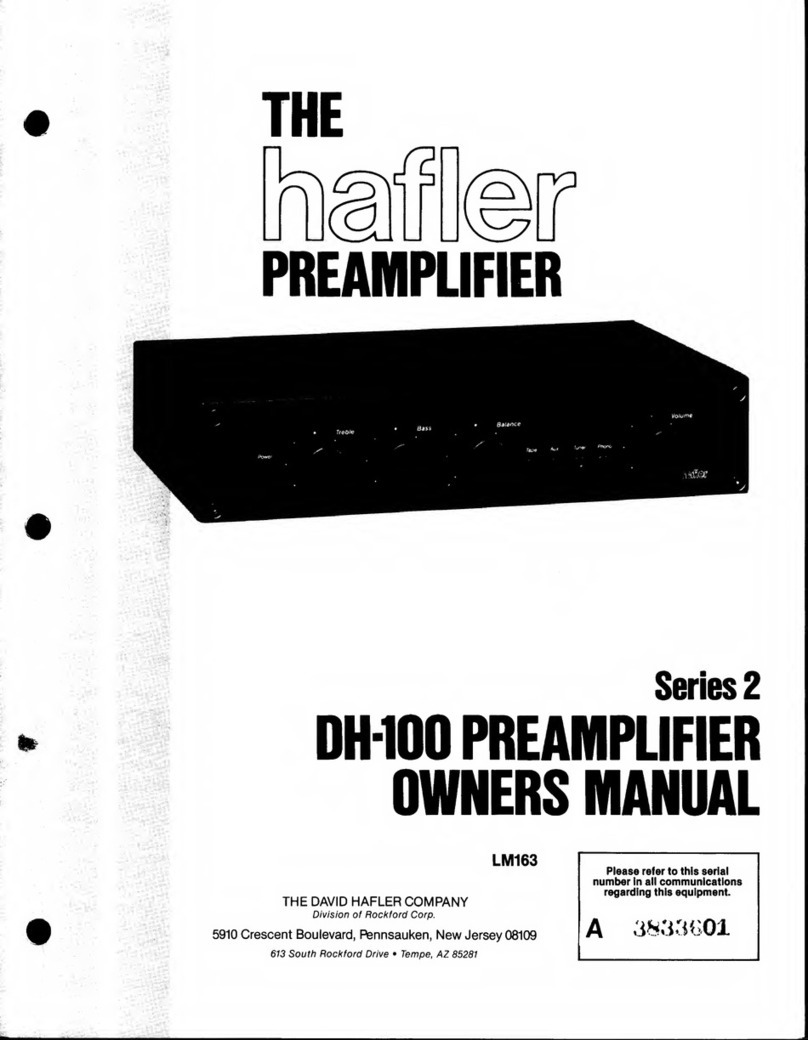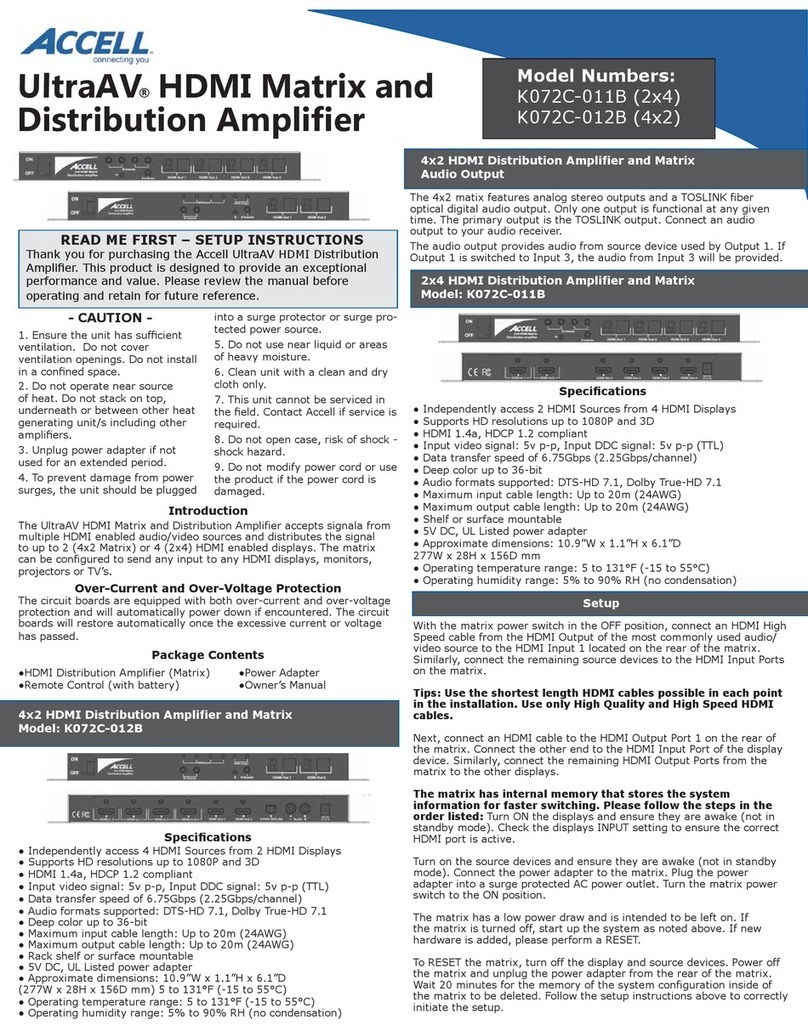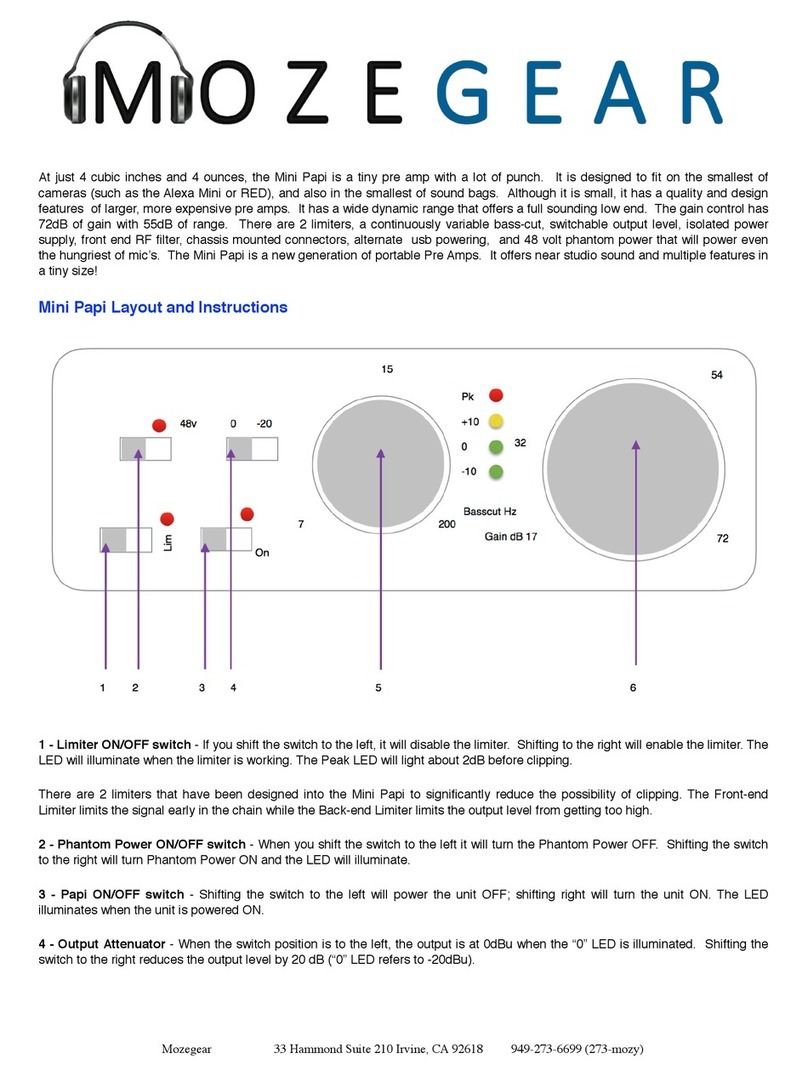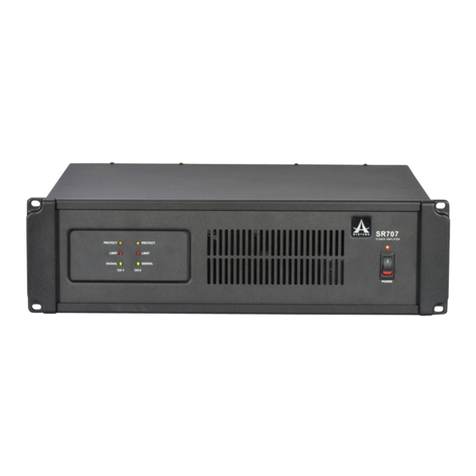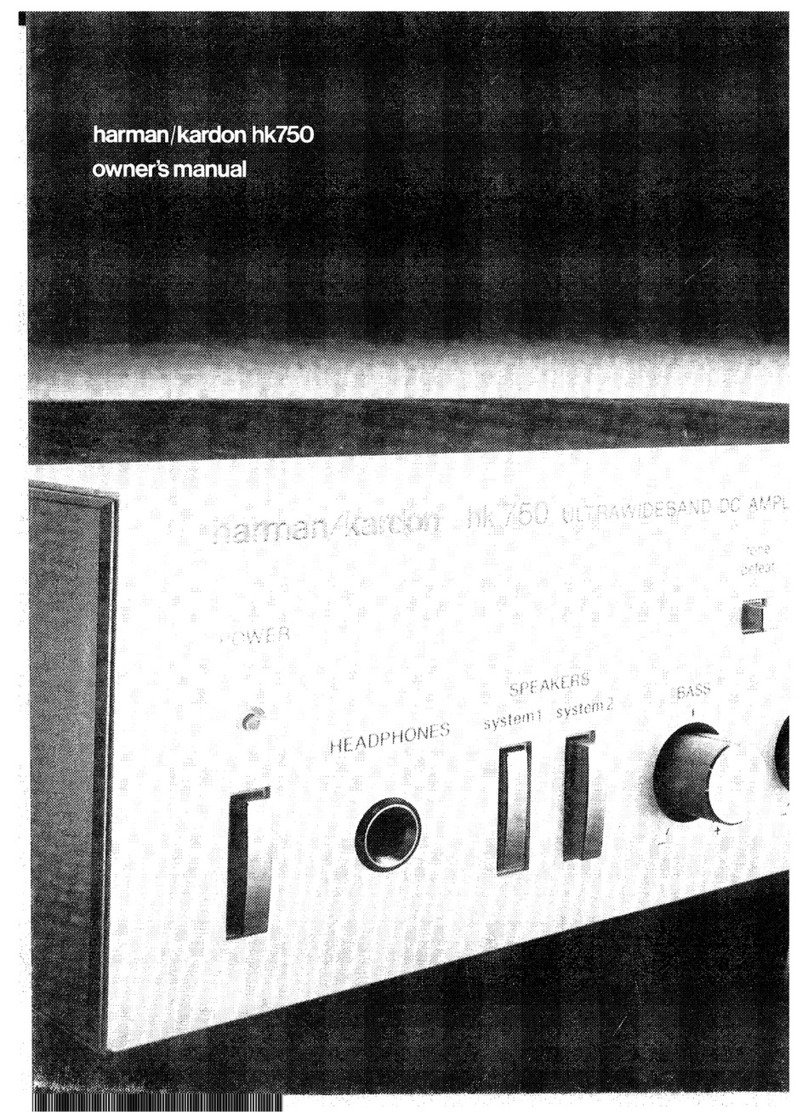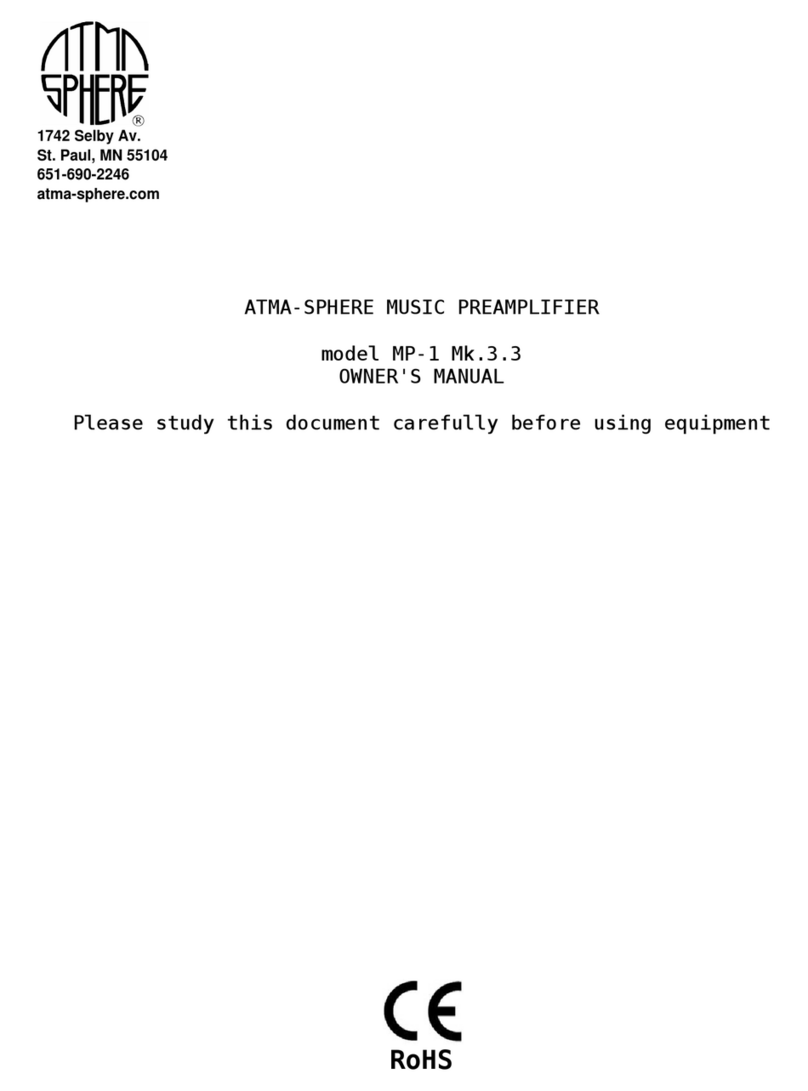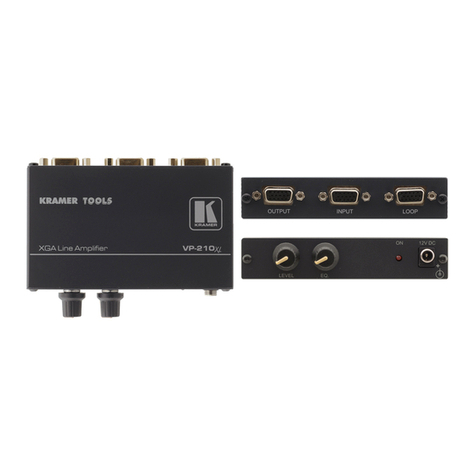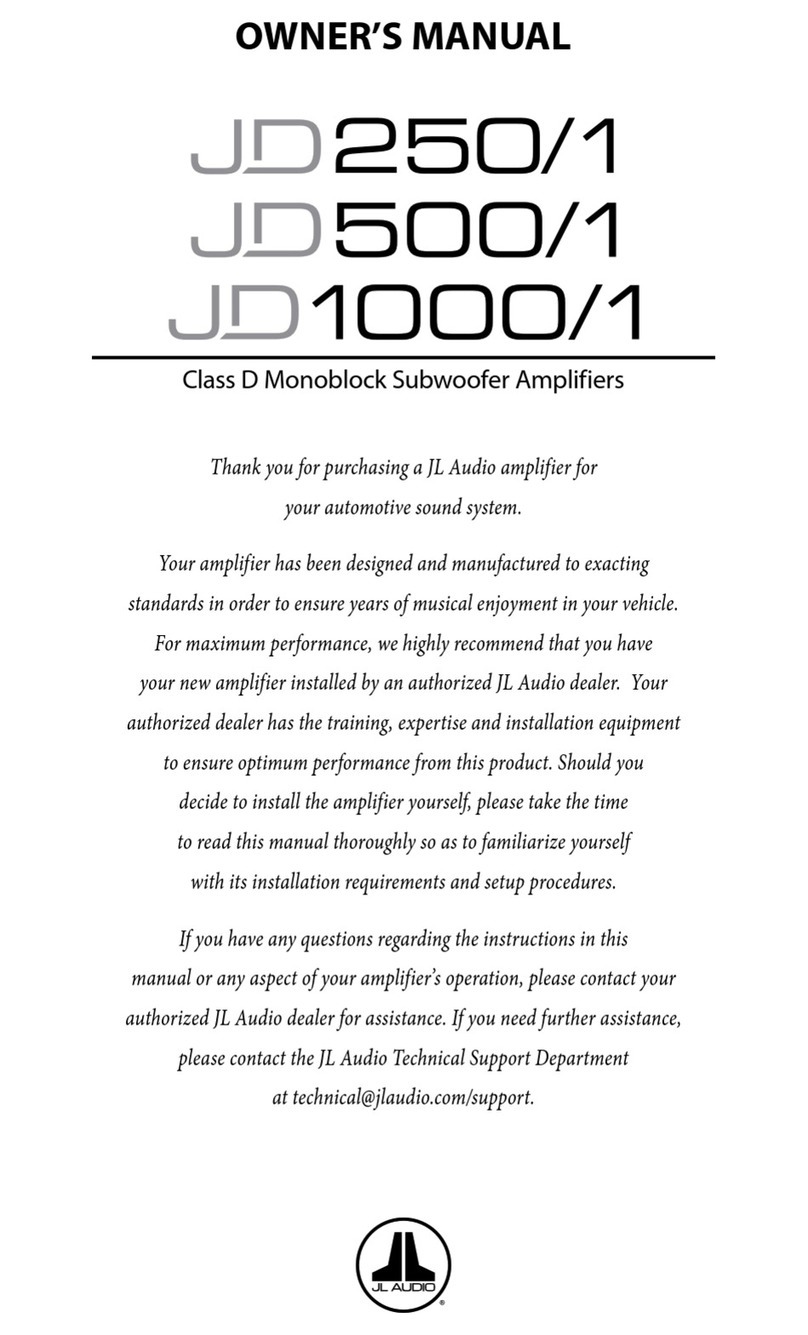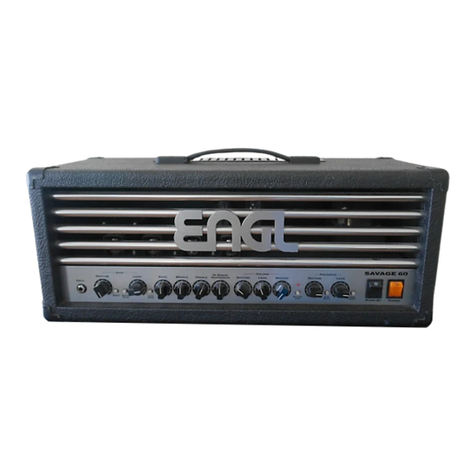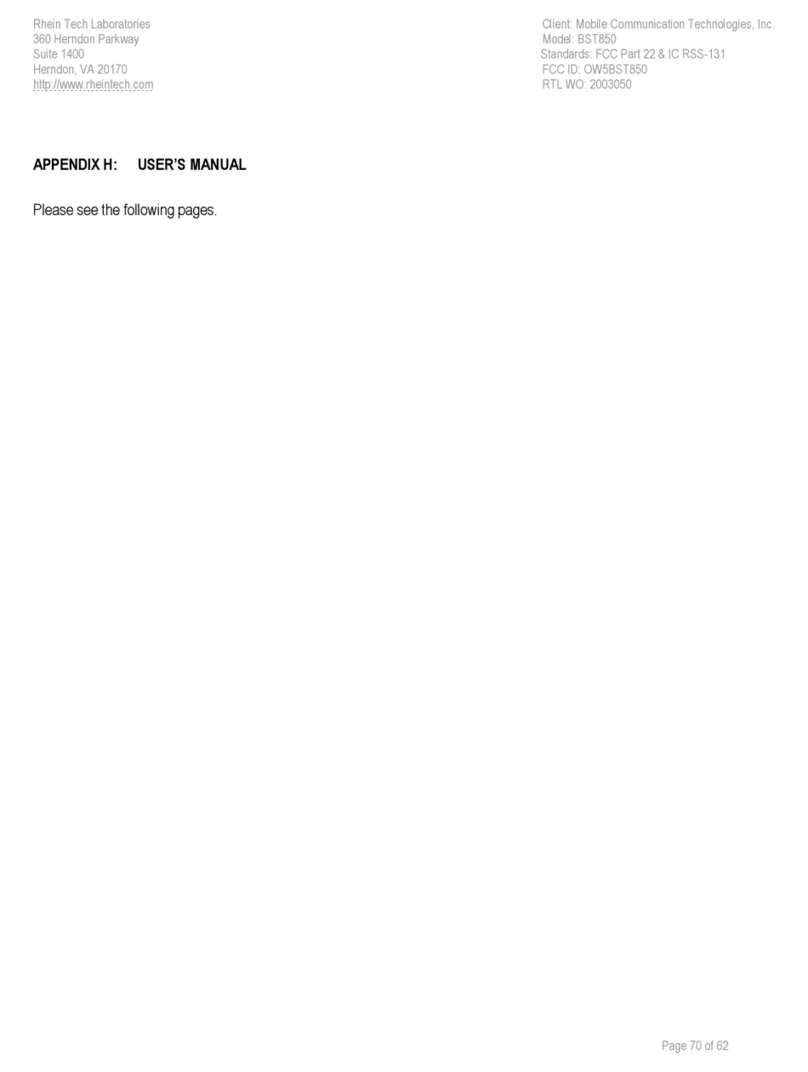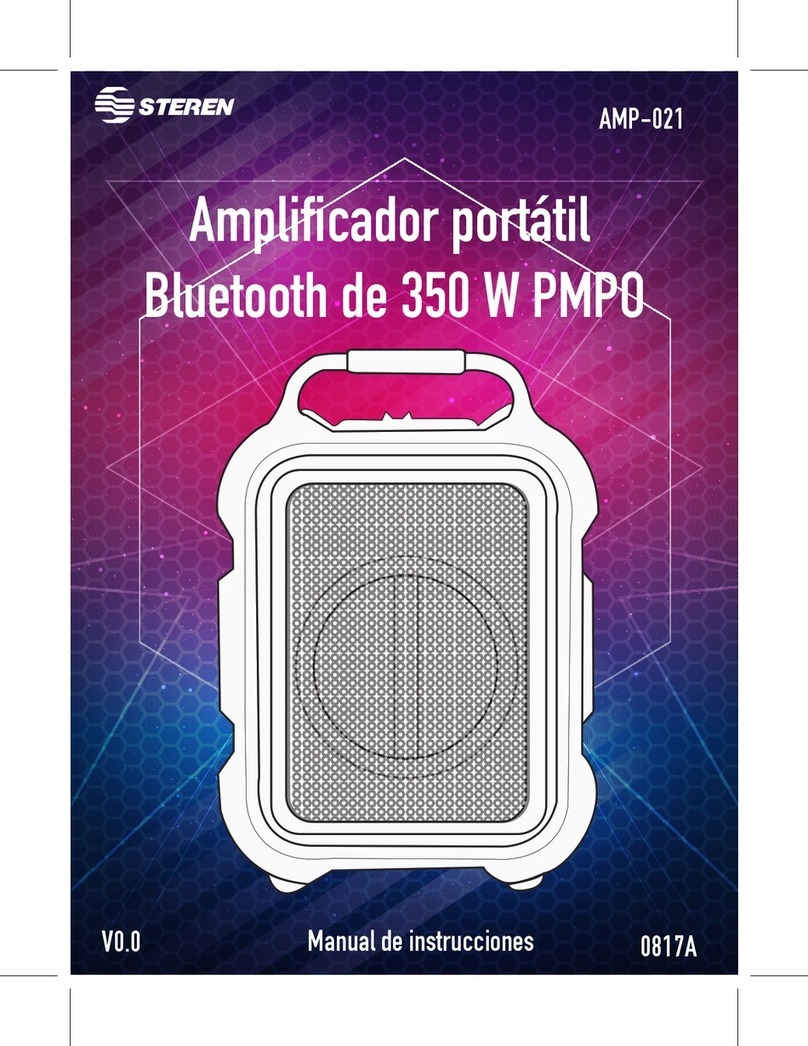Gentec PA40W User manual

PA40W
Mini Digital Amplifier
All Rights Reserved
Version: PA40W_2015V1.5
User Manual

Mini Digital Amplifier
Preface
Read this user manual carefully before using this product. Pictures shown in this
manual is for reference only, different model and specifications are subject to real
product.
This manual is only for operation instruction only, not for any maintenance usage. The
functions described in this version are updated till March 2015. Any changes of
functions and parameters since then will be informed separately. Please refer to the
dealers for the latest details.
All product function is valid till 2015-03-25.
Trademarks
Product model and its logo are trademarks. Any other trademarks mentioned in this
manual are acknowledged as the properties of the trademark owner. No part of this
publication may be copied or reproduced without our prior written consent.
FCC Statement
This equipment generates, uses and can radiate radio frequency energy and, if not
installed and used in accordance with the instructions, may cause harmful interference
to radio communications. It has been tested and found to comply with the limits for a
Class B digital device, pursuant to part 15 of the FCC Rules. These limits are designed
to provide reasonable protection against harmful interference in a commercial
installation.
Operation of this equipment in a residential area is likely to cause interference, in
which case the user at their own expense will be required to take whatever measures
may be necessary to correct the interference
Any changes or modifications not expressly approved by the manufacture would void
the user’s authority to operate the equipment.

Mini Digital Amplifier
SAFETY PRECAUTIONS
To insure the best from the product, please read all instructions carefully before using
the device. Save this manual for further reference.
Unpack the equipment carefully and save the original box and packing material for
possible future shipment
Follow basic safety precautions to reduce the risk of fire, electrical shock and injury
to persons.
Do not dismantle the housing or modify the module. It may result in electrical shock
or burn.
Using supplies or parts not meeting the products’ specifications may cause damage,
deterioration or malfunction.
Refer all servicing to qualified service personnel.
To prevent fire or shock hazard, do not expose the unit to rain, moisture or install this
product near water.
Do not put any heavy items on the extension cable in case of extrusion.
Do not remove the housing of the device as opening or removing housing may
expose you to dangerous voltage or other hazards.
Install the device in a place with fine ventilation to avoid damage caused by
overheat.
Keep the module away from liquids.
Spillage into the housing may result in fire, electrical shock, or equipment damage. If
an object or liquid falls or spills on to the housing, unplug the module immediately.
Do not twist or pull by force ends of the optical cable. It can cause malfunction.
Do not use liquid or aerosol cleaners to clean this unit. Always unplug the power to
the device before cleaning.
Unplug the power cord when left unused for a long period of time.
Information on disposal for scrapped devices: do not burn or mix with general
household waste, please treat them as normal electrical wastes.

Mini Digital Amplifier
Table of Contents
1.Introduction ..................................................................................................................1
1.1.Introduction to Mini Digital Amplifier.....................................................................1
1.2.Features ..............................................................................................................1
1.3.Package List........................................................................................................1
2.System Connection Introduction ..................................................................................2
2.1.Audio Output .......................................................................................................2
2.1.1.Default output: 2x20Watt@4Ohm .................................................................2
2.1.2.Bridge connection: 1x40Watt@8Ohm...........................................................2
2.1.3.Dual-mono Output.........................................................................................3
2.2.Microphone input.................................................................................................3
2.2.1.48V phantom power input .............................................................................3
2.2.2.MIC input ......................................................................................................3
2.2.3.LINE input .....................................................................................................3
3.Operation of the Control Panel and the IR Remote .....................................................4
3.1.Operation of the Control Panel ............................................................................4
3.1.1.Audio switching.............................................................................................4
3.1.2.Volume/EQ controlling ..................................................................................4
3.2.Usage of the IR Remote......................................................................................5
4.System Diagram ..........................................................................................................6
5.Communication Protocol and Command Codes ..........................................................6
6.Specification.................................................................................................................8
7.Panel Drawing .............................................................................................................9
8.Troubleshooting & Maintenance ................................................................................10
9.After-sales Service.....................................................................................................11

Mini Digital Amplifier
1
1. Introduction
1.1. Introduction to Mini Digital Amplifier
The Mini Digital Amplifier is a compact-size digital amplifier (Class-D) with 3 inputs (2
line in and 1 balanced MIC). It is integrated with powerful functions, including bridge
connection, dual-mono, EQ control, microphone mixer etc.
It has a good application in different places, including classroom, small meeting room,
lecture hall, bar, pub etc.
1.2. Features
2x20Watt@4Ohm as the default amplifier output.
Bridge connection function. User can switch the Mini Digital Amplifier to be
1x40Watt@8Ohm by bridge connection.
Two stereo audio inputs, switchable by button, IR remote & RS232.
Volume/Bass/Treble controllable by buttons IR remote & RS232.
MIC port can support balance/unbalance signal, suppress the external noise
effectively.
Line audio output at 3.5mm jack, with volume controllable.
Dual-mono function. User can sum up the stereo audio to two times mono audio.
MIC mixer function. The microphone will be mixed to the line audio output, and be
controlled separately.
MIC input supports 48V phantom power, dynamic MIC and wireless MIC.
Auto noise gate. It keeps detecting the audio and MIC input, will mute the output
when there is no input.
Ultra low inrush current, no need for power sequencing. This allows multiple Mini
Digital Amplifier to be powered on simultaneously without overloading power
circuits.
Convection cooler, fan is not needed.
Antistatic case design: providing good protection for long-term and stable
performance.
1.3. Package List
1 x Mini Digital Amplifier (The mounting ears and Mini Digital Amplifier are as a
whole.)
2 x Pluggable Terminal Blocks
1 x RS232 Cable
1 x Power Adapter
1 x Power Cord

Mini Digital Amplifier
2
4 x Plastic Cushions
1 x User Manual
Notes:
The IR remote and its battery are offered for charge separately.
The IR receiver is also offered for charge.
Please confirm if the product and the accessories are all included, if not, please
contact with the dealers.
2. System Connection Introduction
2.1. Audio Output
2.1.1. Default output: 2x20Watt@4Ohm
The default output of amplifier is 2x20Watt@4Ohm, so user can connect the amplifier
output in the regular way. As the picture below:
2.1.2. Bridge connection: 1x40Watt@8Ohm
The Mini Digital Amplifier has the bridge connection, to double the output power at
1x40Watt@8Ohm. It will sum up the input left channel and input right channel to be
mono output, and the power is up to 40Watt.
The bridge connection is:
Connecting the two pins, like this
Connecting the four pins, like this

Mini Digital Amplifier
3
2.1.3. Dual-mono Output
The Mini Digital Amplifier also has the function of double-mono output. It can sum up
the left and right channel, to be the mono audio output. In this way, the both of the
outputs are showing the same mono audio.
The connection is:
2.2. Microphone input
The microphone input of Mini Digital Amplifier has three modes, and different modes
use different connections, as the picture below:
2.2.1. 48V phantom power input
When the switch turns to “48V”, the MIC input will provide a 48V phantom power. This
is usually used for power supply for condenser microphone, Connection is:
“+” connects to positive, “-” connects to negative and “╧” to ground.
Note: In this mode, only condenser microphone can be connected with.
2.2.2. MIC input
When the switch turns to “MIC”, the microphone input is used for connecting with
dynamic microphone. There are two different connections:
1) Unbalanced connection:
“╧” connects to ground, and “-” connects to signal.
“╧” connects to ground, and “+” connects to signal.
2) Balanced connection: “+” connects to positive, “-” connects to negative and “╧”
connects to ground.
2.2.3. LINE input
When the switch turns to “LINE”, the microphone input is used for connecting with
normal audio or wireless microphone output. There are two different connections:
Connecting the four pins, like this

Mini Digital Amplifier
4
1) Unbalanced connection:
“╧” connects to ground, and “-” connects to signal.
“╧” connects to ground, and “+” connects to signal.
2) Balanced connection: “+” connects to positive, “-” connects to negative and “╧”
connects to ground.
3. Operation of the Control Panel and the IR Remote
3.1. Operation of the Control Panel
The buttons provides the control of volume/EQ control and switching. The following
content introduces audio switching and EQ control in detail.
3.1.1. Audio switching
There are two switchable stereo audio inputs, one 2xRCA input, and one 3.5mm jack
input, switchable through the buttons as below:
3.1.2. Volume/EQ controlling
The line volume and MIC volume can be controlled by the buttons.
The MIC Volume/LINE volume/LINE bass/LINE treble will be selected by the buttons,
and controlled up/down/mute by the function buttons. Please check the picture below:
Source
Selection

Mini Digital Amplifier
5
For example, to turn up the line volume, you should select the “LINE” first, and then
press the button “ ”.
3.2. Usage of the IR Remote
Mute Mode:
MIC: Mute the
microphone volume.
LINE: Mute the line
volume.
SPEAKER: Unmute
Use to transmit the
infrared signal send by
the IR remote.
Audio Controlling Modes
MIC: turn up/down the
microphone volume.
LINE: turn up/down the line
volume.
BASS: bass tuning
TREBLE: treble of line volume.
Audio Inputs
2RCA dual-mono audio inputs
13.5mm jack
Firstly to
select the
function
from this
menu.
Then to turn
down/up the
level, or
mute the
output.

Mini Digital Amplifier
6
Notice: The IR remote, the IR receiver, and the battery of the IR remote are all offered
for charge.
4. System Diagram
IR receiver head, works in
conjunction with the IR
remote. Please point the IR
remote at the IR receiver
when use, to avoid getting out
of control as there is no signal
detected.
3.5mm jack, insert
it into the
specialized socket
(3.5mm) to connect
the IR receiver with
the amplifier

Mini Digital Amplifier
7
5. Communication Protocol and Command Codes
Communication Protocol: RS232 Communication Protocol
Baud rate: 9600 Data bit: 8 Stop bit: 1 Parity bit: none
Command Function Description Feedback Code
1A1. Switching the audio to input 1 A: 1 -> 1
2A1. Switching the audio to input 2 A: 2 -> 1
0A0. Mute Audio of MIC and Line out Mute
1A0. Mute audio of MIC Mute MIC
2A0. Mute audio of line out Mute LIN
0A1. Unmute Audio Unmute
3A0. Switch on Noise Gate Gate On
4A0. Switch off Noise Gate Gate Off
600% Checking the working status
A: 1 -> 1
Volume: 30
Bass: 00
Treble: 00
601% MIC volume up Volume of MIC: 51
602% MIC volume down Volume of MIC: 51
603% Line volume up Volume of LINE: 51
604% Line volume down Volume of LINE: 51
605% Bass level up Bass of LINE: 04
606% Bass level down Bass of LINE: 04
607% Treble level up Treble of LINE: 04
608% Treble level down Treble of LINE: 04
609% Initialization, back to the default
setting Init OK
5[x][x]% Preset MIC volume, [xx] arranges
from [00] to [60].
61 degrees in total.
Volume of MIC: 50
7[x][x]% Preset line volume, [xx] arranges
from [00] to [60].
61 degrees in total.
Volume of LINE: 50
8[x][x]% Preset the bass level, [xx] arranges
from [00] to [08].
9 degrees in total.
Bass of LINE: 04
9[x][x]% Preset the treble level, [xx] arranges
from [00] to [08].
9 degrees in total.
Treble of LINE: 04
Notice:
1: The letter inside bracket [ ] is the variable code, which is changeable.

Mini Digital Amplifier
8
2: The bracket [ ] is not included to the RS232 commands.
3: Any dot “.” after the letters is part of the commands.
Example 1:
Switching the input 2 to the line out, RS232 command is: [2A1.]
Example 2:
Turning up the volume of line audio, RS232 command is: [603%]
Example 3:
Preset the MIC volume to “21” degree, RS232 command is: [521%]
Example 4:
Checking the working status of Mini Digital Amplifier, RS232 command is: [600%]
6. Specification
Audio Input Audio Output
Input 2 stereo audio,
1 MIC Output 1 amplifier,
1 stereo audio
Input
Connector
2 RCA
1 3.5mm jack
1 pluggable terminal
block (3P,3.81mm),
Output
Connector
1 3.5mm jack
1 pluggable terminal
block (4P, 5.08mm)
Input
Impedance >10KΩOutput
Impedance
50Ω/stereo,
4~8Ω/Amplifier
Audio General
Frequency
Response 20Hz ~ 20KHz CMRR >70dB@20Hz~20KH
z
SNR 80dB at maximum
output Bandwidth 20Hz ~ 25KHz
Stereo
Channel
Separation
>75dB@20Hz to
20KHz THD + Noise
1%@1KHz,
0.3%@20KHz
at nominal level
Voltage Gain 32dB Power Output 2x20 Watts (4 Ohms)
Control Function
RS232 Control 3-hole phoenix
connector Panel Control Optional button
control
IR Remote Optional IR remote

Mini Digital Amplifier
9
7. Panel Drawing

Mini Digital Amplifier
10
8. Troubleshooting & Maintenance
1) When there is no output audio:
Check if there is any signal at the input.
Check if there is any signal at the output.
We can check these by using an oscilloscope or a multimeter. If there is no
signal input/output, maybe the input/output cables broken or the connectors
loosen, please change for another cable.
Check if the output port number is the same with the controlled one.
If not the problem mentioned above, probably there is something broken inside
the unit, please send it to the dealer for repairing.
2) If the POWER indicator doesn’t work or no respond to any operation, please make
sure the power cord connection is good.
3) If the output sound is interfered, please make sure the system is grounded well.
4) If the static becomes stronger when connecting the audio connectors, it probably
due to bad grounding, please check the grounding and make sure it connected
well, otherwise it would damage the converter.
5) If the Mini Digital Amplifier amplifier cannot be controlled by the keys on the front
panel, RS232 port or IR remote, the unit may has already been broken. Please
send it to the dealer for repairing.

Mini Digital Amplifier
11
9. After-sales Service
If there appear some problems when running the device, please check and deal with
the problems referring to this user manual.
1) Product Limited Warranty: We warrant that our products will be free from defects
in materials and workmanship for three years, which starts from the first day you
buy this product (The purchase invoice shall prevail).
Proof of purchase in the form of a bill of sale or receipted invoice which is evidence
that the unit is within the Warranty period must be presented to obtain warranty
service.
2) What the warranty does not cover (servicing available for a fee):
Warranty expiration.
Factory applied serial number has been altered or removed from the product.
Damage, deterioration or malfunction caused by:
Normal wear and tear
Use of supplies or parts not meeting our specifications
No certificate or invoice as the proof of warranty.
The product model showed on the warranty card does not match with the
model of the product for repairing or had been altered.
Damage caused by force majeure.
Servicing not authorized
Any other causes which does not relate to a product defect
Delivery, installation or labor charges for installation or setup of the product
3) Technical Support: Email to our after-sales department or make a call, please
inform us the following information about your cases.
Product version and name.
Detailed failure situations.
The formation of the cases.
Remarks: For any questions or problems, please try to get help from your local
distributor.

Table of contents
Other Gentec Amplifier manuals

